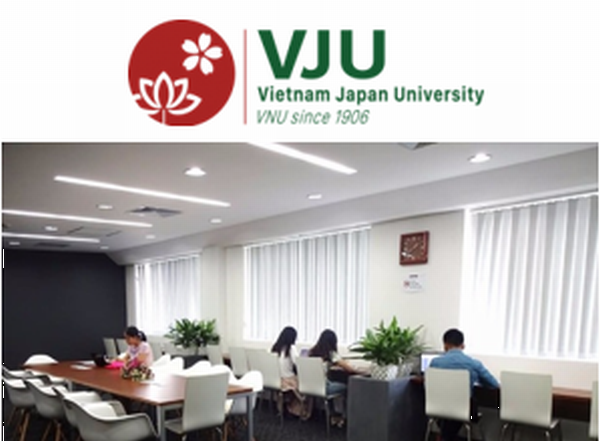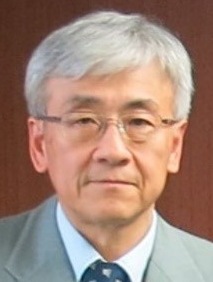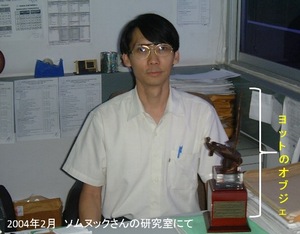IAC News
IAC News No.56, June 2017
Japan Society of Civil Engineers International Activities Center June 1, 2017 IAC News No.56
Alumni of DOBOKU – the pages for those having links with Japan–
Dear Alumni of DOBOKU, who keeping their bases in their homelands, travel all over the world on business after completing research projects or their undergraduate and/or graduate educations in the civil engineering field in Japan.
A new series of column Alumni of DOBOKU, which starts in JSCE Magazine Vol. 102. No. 6 June 2017, introduces those having links with Japan about their professional field-experiences, their views and messages to Japan. Their words will give some ideas and encouragements to the students who are studying in Japan and the Japanese civil engineers who are pursuing their career paths in the global arena. (quoted from the original article published in the aforesaid issue of JSCE Magazine)
The International Activities Center (IAC), in cooperation with Editorial Committee of JSCE Magazine, introduces the "Alumni of DOBOKU" in both "IAC News" Japanese and English versions. In case that the original articles are in English, they are published only in the IAC News English version. The articles published in both JSCE Magazine (in Japanese) are published in the IAC News Japanese version, too.
【Alumni of DOBOKU Series】
“Study and research experiences in Japan and works after returning from Japan”
Somnuk Tangtermsirikul
Director, Sirindhorn International Institute of Technology (SIIT),
Thammasat University, Thailand
Head, Construction and Maintenance Technology Research Center (CONTEC)

Somnuk Tangtermsirikul
Thanks to JSCE for inviting me as the first contributor to this column of the Magazine.
I first went to Japan in 1984, to study a master’s degree at the Concrete Laboratory, Civil Engineering Department of the University of Tokyo, studying behavior of RC piers under cyclic loading. That was my first experience to study seismic problems though Thailand did not have concern on seismic disaster at that time. I continued my doctoral study there, diverting my study areas to materials. During this period, I had the opportunity to get involved in various research subjects such as water transport in fresh concrete, concrete pumping, SCC, etc., by working together with many graduate students and researchers from companies. After graduated in 1989, I joined the Technology Research Center of Taisei Corporation, working for 3 years on SCC and chloride corrosion, where I both contributed and learned a lot. I went back to Thailand and joined Sirindhorn International Institute of Technology, Thammasat University in its establishment year in 1992. I have been working there upto now.
Outreach Activities in Thailand
After returning home, I, together with some Japanese university’s civil engineering alumni (Dr. Taweep Chaisomphob, currently an Associate Professor at SIIT and Dr. Penung Warnitchai, currently a Professor at AIT), initiated the idea to establish subcommittees in various civil engineering disciplines under the Civil Engineering Chapter of the Engineering Institute of Thailand (EIT). I was then the first Secretary of the Concrete Subcommittee. By these subcommittees, the Civil Engineering Chapter have become a dominant Chapter of EIT now. I became the Vice Chairman of the Concrete Subcommittee in 1998 and Chairman from 2000 to 2004. The concrete subcommittee launched many seminar/ training courses, arranged conferences and published a number of standards including Standard Specification for Materials and Construction of Concrete Structures (EIT 1014) of which I was the Chairman of the drafting committee. After a few years, I initiated the idea to set up Thailand Concrete Association (TCA), with supports from many key figures in the Thai concrete society. TCA was set up in 2004. I was the first Secretary General and elected the President in 2010 until 2014, and later became an Advisor to the present. I also have been active in the Asian Concrete Federation (ACF) since a part of it was still the former International Committee on Concrete Model Code (ICCMC), later merged as a single ACF organization. I have served as the representative, nominated by TCA since its beginning, playing some active roles in ACF including chairing the 1st and 5th ACF International Conferences, publishing 2 reference standards for ACF, serving 2 terms as Vice President (Technical) and then Treasurer until now, looking after the permanent office of ACF in Thailand.
Utilization of Fly Ash in Thailand
For research activities, I started researching fly ash usage in Thailand in 1992. I was the key researcher who introduced the use of fly ash to the cement and concrete industries in Thailand by conducting comprehensive studies on properties of fly ash concrete, solving application problems, educating engineers and university students, establishing standards, producing supporting tools such as books, manuals, articles, and software for design, etc. The success of my research created a great business opportunity, and the veiws of the Electricity Generating Authority of Thailand toward fly ash changed from a waste to a valuable product. It also improved the qualities of many concrete structures in Thailand as well as triggered the launching of many special concrete products by ready-mixed concrete companies. From the results of the success, all the fly ash key researchers and I received the Outstanding Technologist Award in 2002.
Introduction of sustainable construction concept
At the same time, my efforts also were spent in introducing sustainable construction concept into the construction industry in Thailand, starting with introducing special concrete for durability purposes to the industry of ready-mixed concrete such as marine concrete, sulfate-resisting concrete, etc., to launching durability and service life design projects. The outputs of this project is the establishment of “Thailand Standard for Durability and Service Life Design of Concrete Structures, DPT 1332“ (see Fig.1) published by the Department of Public Works and Town and Country Planning, later translated and proposed to be a reference country standard for ACF in 2012. This project received the Outstanding Research Award from the Thailand National Research Council in 2016.
Due to the significant effects made with those research outputs upon the civil engineering society, I was awarded the National Distinguished Researcher Award from the National Research Council in 2013.
At SIIT, I became a full-time professor in 2003, and have worked as the Director of SIIT since 2012. In 2006, I established the Construction and Maintenance Technology Research Center (CONTEC), where 8 researchers and one secretary are now working (see Photo 1). CONTEC also has its network partners in 5 other universities in Thailand.
As the last message, I appreciate all my civil engineering colleagues in Japan, who always have been my good friends and partners. I do believe that our close relationship, collaboration and mutual support will bring more benefits, prosperity and peace to our civil Engineering societies.
Profile: Born in Thailand in 1962. After completion of his doctoral course at Tokyo University in 1989, worked for Taisei Corporation, then went back to Thailand when SIIT was established in 1992. Became director of SIIT in 2012.
|
《Column》 MAEKAWA Koichi, Professor, School of Engineering, The University of Tokyo
Prof. Somnuk was the PhD candidate whom I supervised for the first time in my life, and a colleague to challenge self-compacting concrete with Prof. K. Ozawa under the supervision of Prof. Emeritus Okamura. According to the Department’s policy in those days, graduate students were strongly advised to change their topics when they advanced to the doctorate program from the master one. Thus, his topic of thesis study was changed from the seismic analysis of reinforced concrete to the development of new fresh concrete. It was an accident for me to swing from solid mechanics to multi-phase flow, and it must have been a disaster for him. Even though many years have passed, I feel so sorry for my insufficient capability and poor guidance. But, we could share tough discussion of full capacity and gained to the courage to overcome disciplinary boundaries. After his going back home, Prof. Somnuk challenged the new industrial society where fly ash could be effectively used together with his 100 coworkers. The object granted to the youngest fellow in the history of Thai Kingdom was a yacht sailing on troubled waters and His Majesty the King controlling it (the photo below). That’s a pride of civil engineer.
|
※Alumni of DOBOKU Series is in collaboration with Editorial Committee of JSCE Magazine.

Fig.1: Standard DPT 1332 Durability and Service life Design for Concrete Structures

Photo 1: CONTEC members
A Summary of the “Research Report Conference on Flood Damage due to the August 2016 Hokkaido Heavy Rain and Disaster Restoration Status”
On April 13, 2017, the “Research Report Conference on Flood Damage due to the August 2016 Hokkaido Heavy Rain and Disaster Restoration Status” was held at the auditorium of the Japan Society of Civil Engineer (JSCE) Headquarters. This event was organized by JSCE Disaster Reduction and Prevention Committee and supported by Hokkaido Regional Development Bureau, Ministry of Land, Infrastructure, Transport and Tourism (MLIT). That committee was established as a standing committee to discuss JSCE’s approach to disaster risk reduction and prevention with the aim of improving the effectiveness of its various activities for reducing and preventing disaster risks. The committee was formed by merging the Committee on Disaster Reduction and Prevention for Realization of a Resilient Society established in 2013 following the Great East Japan Earthquake in March 2011 and the Committee on the Creation of Regional Resilience established in 2015.
In August 2016, three typhoons made landfall in Hokkaido within a period of one week. One week later, another typhoon approached Hokkaido. They brought record-breaking torrential rains and large-scale inundation caused due to river bank collapse, damage to highways, bridges and railroads, in addition to widespread damage to agriculture. This series of heavy rainfalls caused serious damage in various parts of Hokkaido. Following this severe disaster, the Hokkaido Regional Development Bureau of MLIT and Hokkaido jointly established the Research Committee on Water Disaster Prevention Measures Based on Lessons Learned from the Severe Disaster due to the August 2016 Hokkaido Heavy Rain (Chairperson: Tadashi Yamada, Professor at the Faculty of Science and Engineering, Chuo University). From October 2016 to February 2017, the committee examined the severity of the disaster from various aspects including weather, flood control and disaster prevention, and discussed how effective measures to prevent water disaster could be implemented in the future. This research report conference was held to report on the committee’s results.
Table : Programs Presented at the Research Report Conference
|
Address |
Tamiharu Tashiro, President of Japan Society of Civil Engineers |
|
Lecture 1 |
“Impact of Disaster and Flood Damage due to the August 2016 Hokkaido Heavy Rain and Efforts for the Future” |
|
Lecture 2 |
“Overview of Survey on August 2016 Hokkaido Heavy Rain Compiled by Research Team” |
|
Lecture 3 |
“Effective Water Disaster Prevention Measures to Be Implemented in the Future Based on the Lessons Learned from the Severe Disaster due to the August 2016 Hokkaido Heavy Rain” |
The above table shows the programs presented at the conference. After the opening address by JSCE President Dr. Tashiro, Mr. Hideto Kon, Director-General of the Hokkaido Regional Development Bureau, delivered the first lecture. He explained the damage situation of facilities maintained by the Hokkaido Regional Development Bureau including river embankments and national highways, and inundation damage to houses and farmland due to the heavy rain, and the extent of road network disruptions, the present state of restoration, and future efforts to be made.
Next, Prof. Yasuyuki Shimizu, Leader of the Research Team on Flood Damage due to the August 2016 Hokkaido Heavy Rain, delivered the second lecture, summarizing the damage situation at the time of the heavy rain based on the results obtained by the research team. In the third lecture, Prof. Tadashi Yamada, chairperson of the committee, made proposals on the following seven items: 1) flood control measures taking climate change into consideration, 2) total mobilization of structural and non-structural measures, 3) enhancement of evacuation and evacuation system, 4) measures for flood control of branch streams and upper reaches of rivers, 5) evaluation of existing facilities and their effective utilization, 6) response to structures built with permission, and 7) conservation of production space.
The conference was attended by as many as 117 participants from industry, government and academia including companies, civil engineering consultants and general contractors, who listened intently to the lectures. The conference was a great success.
【Reported by Ryosuke Takahashi (Akita Univ.), Leader of Information Group, IAC】

Presentations with the images of affected areas
Vietnam-Japan University: New Education Program for Bridging Vietnam and Japan

Prof. Hironori Kato
(The Univ. of Tokyo)
Vietnam-Japan University (VJU) is a new international university in Hanoi, Vietnam, which has been established under the cooperation of Japanese and Vietnamese Governments. The goal of VJU is to produce international experts who are required both for Vietnam, which has been experiencing a rapid economic growth, and for Japan, which wants to extend their business in Vietnam under globalization. Six master programs including the infrastructure engineering field has started their operations since September 2016, when an opening ceremony was held in Hanoi. Many well-known Japanese lawmakers participated in the ceremony, which indicated the Japan’s strong interests in this university. Additionally their Majesties the Emperor and Empress also met and encouraged the VJU’s students during their visit in Vietnam in March 2017.
The establishment of VJU was originated from a joint statement of Japan and Vietnam, which included a phrase “to examine the feasibility of establishing a high-quality university in Vietnam with support from Japan” in 2010, and since then, it has been prepared with assistance and support from many people and institutes including the Japan International Cooperation Agency (JICA). Currently the operation of VJU is led by Rector Professor Motoo Furuta, ex-Vice-President, the University of Tokyo. The campus is located in the My Dinh district, Hanoi presently although it is planned to move to “Hoa Lac High-Tech Park,” which is the first and largest high-tech park in Vietnam in a near future.
The infrastructure engineering program is operated under the leadership of The University of Tokyo as the representative university with technical supports from the professors of Ibaraki University, Osaka University, Showa Women’s University, Takushoku University, and University of Tsukuba together with local professors. The curriculum of the infrastructure engineering program was designed to follow the example of the one of The University of Tokyo, reflecting a strong request from the Vietnamese side. The lectures are given basically in English and also a three-month internship program in Japan is provided.
Communication with the Japan Society of Civil Engineers (JSCE) have been developed. For instance, a joint seminar organized by International Center of JSCE and VJU was held in June 2016. Students in VJU have strong interests in Japanese firms and universities, and they are highly expected to work in the international market by bridging two countries in the future.

Opening Symposium in September 2016
Right: Prof. Motoo Furuta, Rector of VJU
Left: Mr. Hiroshige Seko, Minister of Economy, Trade, and Industry, Japan

Symbol of VJU (Top) and Library of VJU (Bottom)
Updates
- Summary of feature articles in JSCE Magazine Vol. 102, No. 6, June 2017 is available on the JSCE website.
http://www.jsce-int.org/pub/magazine - Five projects introduced in the booklet “TRANSFER OF CIVIL ENGINEERING TECHNOLOGY IN SERVICE” published on the occasion of the 100th year anniversary of JSCE are introduced on the JSCE Website.
http://www.jsce.or.jp/e/archive - “Journal of JSCE” the research paper collections can be viewed on the JSCE website.
- https://www.jstage.jst.go.jp/browse/journalofjsce
- Concrete Committee International Newsletter No. 49
http://www.jsce.or.jp/committee/concrete/e/newsletter/newsletter48/index.html - Disaster Fact Sheet
http://committees.jsce.or.jp/disaster/ - IAC Students and Alumni Network
http://www.jsce-int.org/IAC_network
IAC News Subscription
The IAC News is one of the communication tools to share information and ideas with the members. We would like to invite you, your friends and colleagues to join the communication and to subscribe the IAC News. Please register online: (http://www.jsce-int.org/node/150). We look forward to meeting you.


